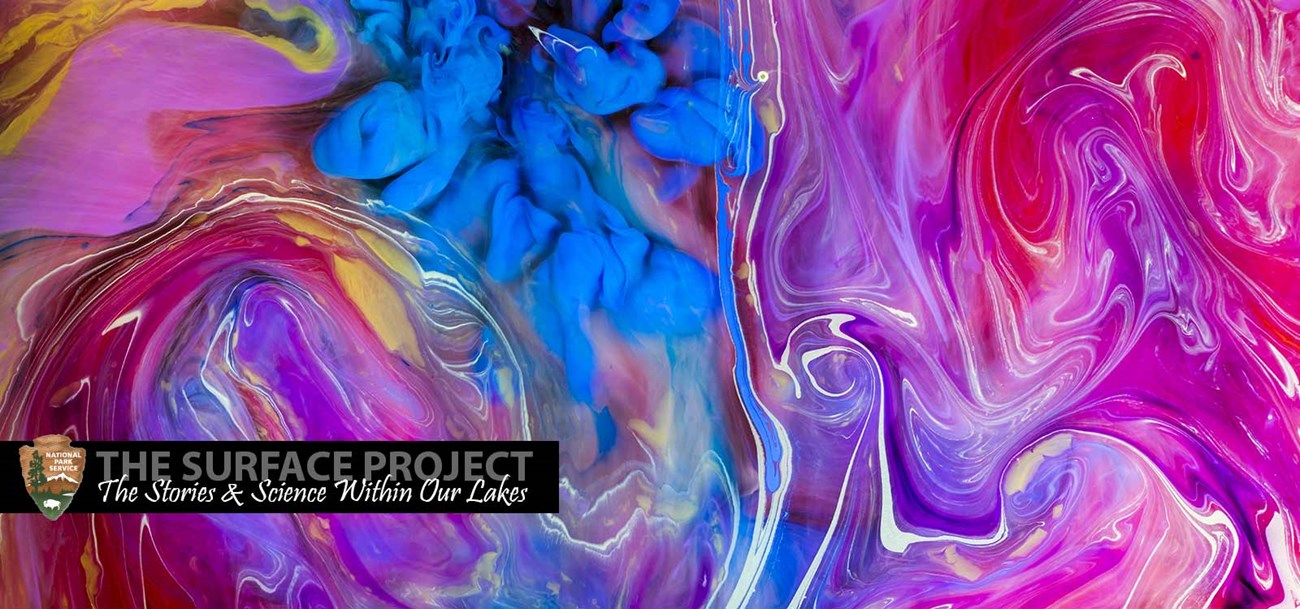
Mixing It Up In Lakes Mead & MohaveThe water that enters Lake Mead and Lake Mohave doesn’t just flow straight through these reservoirs – instead, it mixes and mingles as it makes its way through the basins. How this water mixes can have big consequences for nearly every aspect of the lakes, from the paths (and eventual fates) of contaminants to the preferred feeding spots of fish. The water in Lake Mead comes from several different sources. Although most of the water arrives from the Colorado River, some also comes from the Virgin River, Muddy River, and Las Vegas Wash. And while we may think of all this water as “just water”, it’s not all the same - each source provides water that’s a bit different from each other in terms of temperature, oxygen levels, nutrient concentrations, and other qualities. It’s these characteristics that determine what happens to the water as it enters and flows through the lake. The water that comes into Lake Mead from the Colorado River, for instance, is colder and less salty than the water that is already in the lake. And since colder water is denser than warmer water, this water flowing in tends to sink, flowing along the bottom of the lake. 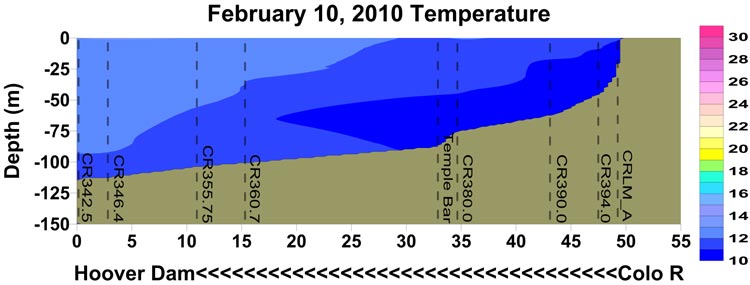
In this graph of water temperatures, the darker blue (colder) water entering from the Colorado River on the right is shown to sink and flow as an undercurrent all the way to the Hoover Dam. Chart courtesy of SNWA. The temperature of the water arriving from Las Vegas Wash, on the other hand, varies throughout the year. In the winter, when this water is chilly, it too enters and flows along the bottom of the lake. But in other seasons, when this water is warmer, it flows through the basins higher in the water column. 
An aerial view the various water channels in Lake Mead. The creation of all these layers of water, which scientists refer to as stratification, matters for many of the lake’s processes. The top layer of water gets the most sunlight, so that’s where populations of photosynthesizing species of plankton, like algae, thrive. Fish are often attracted to these food-rich areas. Then there’s the matter of oxygen, which almost all living creatures need to survive. The colder the water is, the more oxygen it can hold, which can affect what kind of life – and potentially even how much life – can exist in the water. Nutrient levels matter too; water that’s rich in nitrogen, phosphorus, and other nutrients (like the water that flows in from Las Vegas Wash), creates layers where algae and other species thrive. Many aspects of lake life, from algal blooms to preferred fish habitats, depend on where different layers of the lake exist. On a daily basis, wind and water currents can change how much these layers mix together. On a grander scale, about once every two years, most of the water in Lake Mead mixes almost completely from top to bottom. This happens only when the lake’s depth, air temperatures, and the amount of water coming in from the Colorado River are just right to equalize temperatures throughout the lake. Drought can affect how likely different layers are to mix together too, since changing water levels create large areas of shallow water that warm more quickly. These changes are likely to affect how algae, native fish, and other species, survive and thrive in these reservoirs. 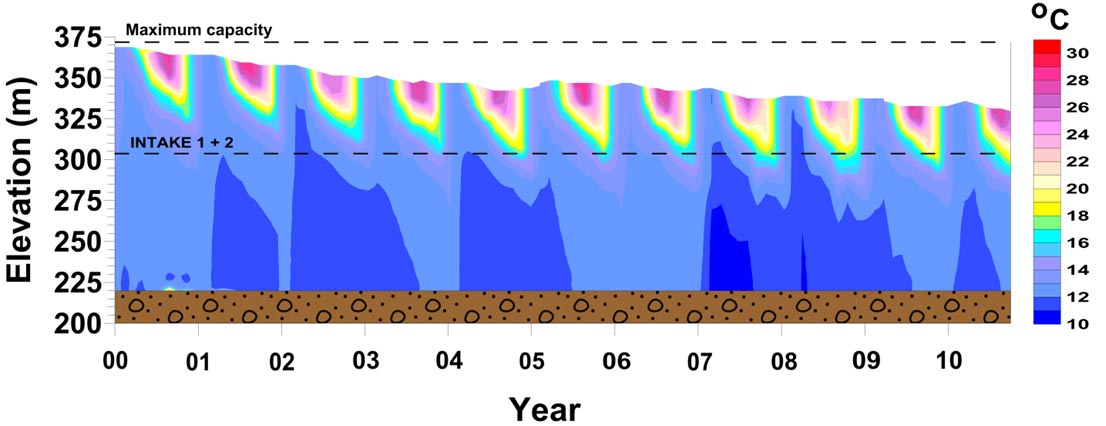
Overall the temperature pattern in Lake Mead has remained consistent; highs approaching 30 C and lows approaching 10 – 12 C. On a boating trip out on the lakes, it’s easy to merely notice how warm or cool the surface of the water is. But beneath the surface, how the different layers of water form, interact and mix are what determines everything that happens in these lakes. Lake Mohave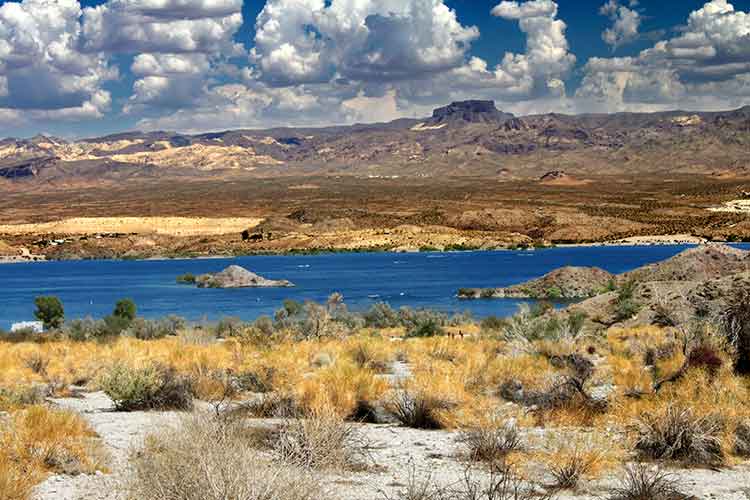 The hydrology of Lake Mead can be greatly impacted by dropping water levels. This complex connection is profoundly evident at Lake Mead, but it may also be affecting water quality at Lake Mohave. Situated between a series of foreboding canyon walls and built between Hoover Dam and Davis Dam, Lake Mohave is a reservoir used to fine-tune water releases headed downstream. But a changing climate and persistent drought is threatening the reservoir’s water quality. Read MoreThe Character of a Lake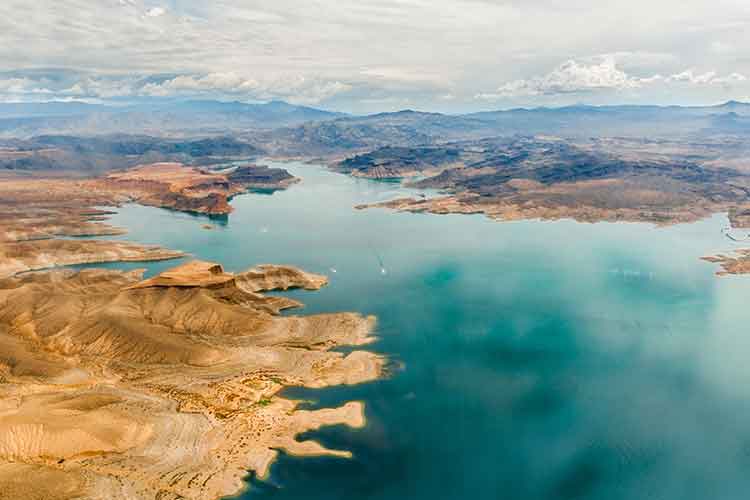
Lake Mead has various inlets and outlets. Lake Mead and Lake Mohave are more than just large bodies of water. They are dynamic, ever-changing systems with specific characteristics that make them different than traditional lakes. Part of what makes them different is how water flows in and out of them, and scientists have just begun to understand their secrets. |
Last updated: April 4, 2017
